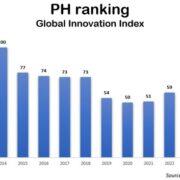The 2020 Census of Population and Housing (CPH) will help inform the country’s policies and strategies moving forward, the National Economic and Development Authority (NEDA) said.
“Demographic data is a basic and crucial input in the plans and projects of both public and private sectors. Hence, the government conducts the census every five years to provide agencies, businesses, and individuals with up-to-date and reliable information on the population,” Socioeconomic Planning Secretary Karl Kendrick T. Chua said in a press conference on the results of the 2020 CPH by the Philippine Statistics Authority (PSA).
Quarantine restrictions and health protocols challenged statistical systems around the world. Last year, countries, such as Thailand and Saudi Arabia, opted to postpone their national census to 2021 or 2022.
Despite these challenges, the Philippine government decided to push through with the 2020 census to better inform its recovery strategies. This was also made possible by the support of local government units (LGUs) that provided health and logistical assistance for the conduct of the census.
“Each response further enables the government to craft evidence-based policies and interventions that benefit the Filipino people, most especially the poor,” Chua said.
On the population density of the National Capital Region (NCR), Calabarzon, and Central Luzon, Chua emphasized, “What is important and what determines whether the effects would be good or bad for the people is if they are being provided with better opportunities and services, such as water, sanitation, and housing.”
The count was declared official for all purposes by the President of the Philippines through Proclamation No. 1179 signed July 6, 2021.
The total Philippine population is recorded at 109,035,343 as of May 1, 2020. Details and highlights of the 2020 CPH can be accessed on the PSA website.
–
Stay updated with news and information from the National Economic and Development Authority by visiting their website at https://www.neda.gov.ph.






